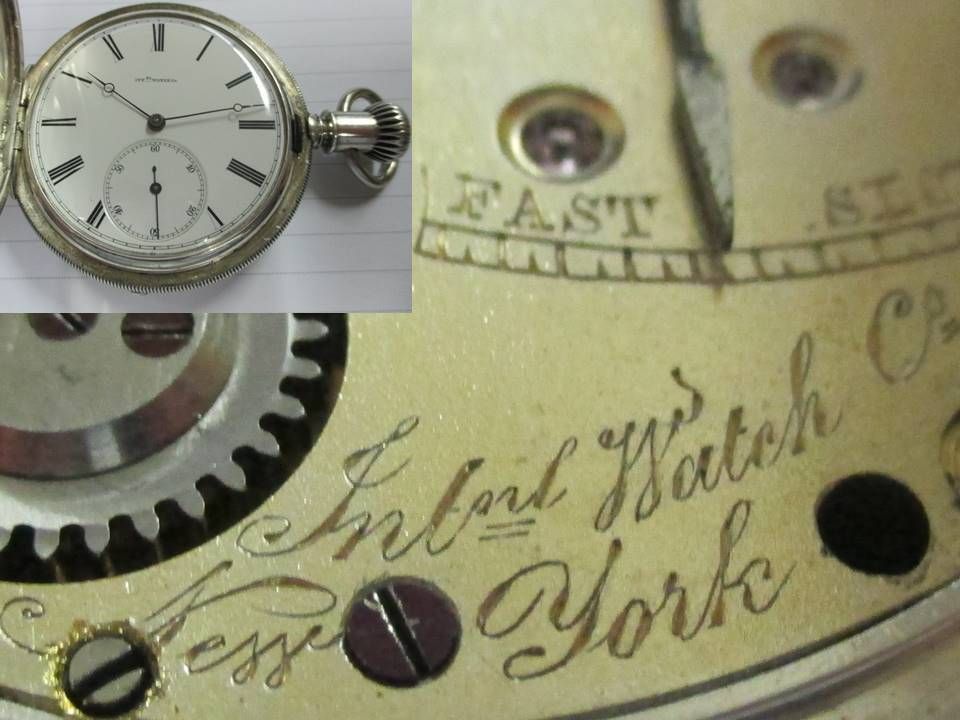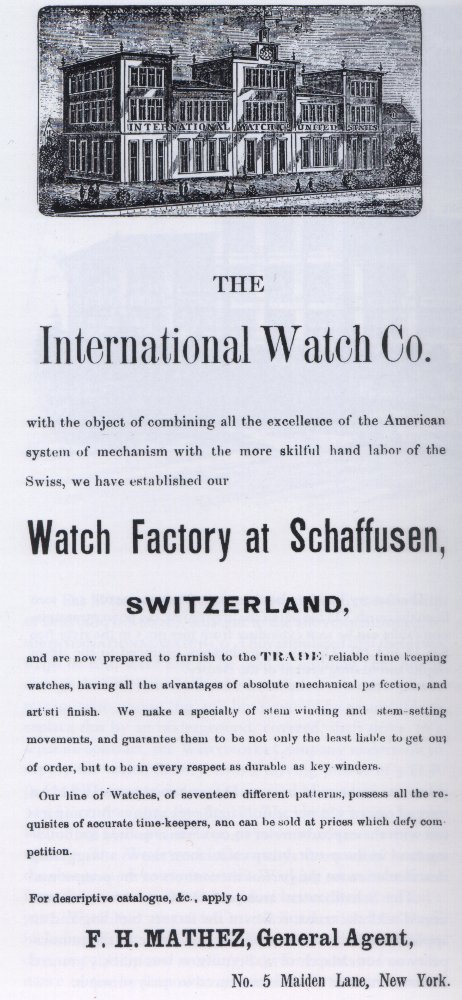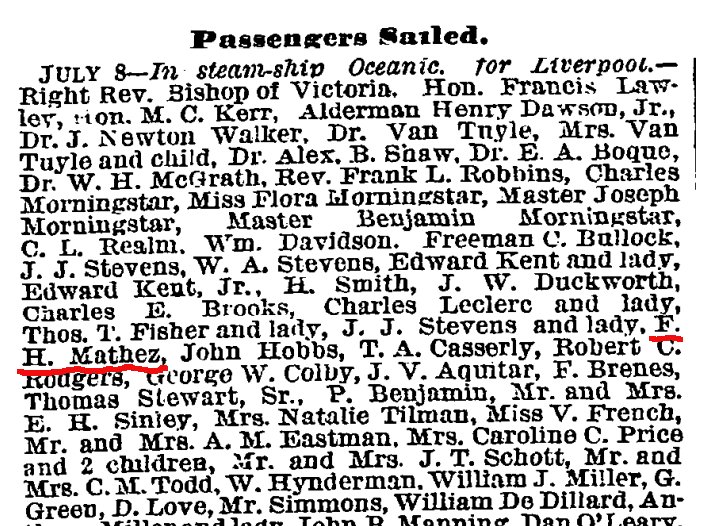From 1795 until the early 1900s, Maiden Lane was the center of the jewelry district in New York City. Located in Lower Manhattan, the jewelry industry started to move north by the 1920s, in part because the buildings on Maiden Lane had begun to become old. Today most of the original buildings aren't standing.
In the early 1870s, when the first Jones watches were being made by IWC, the plan was to sell them in North America. To that end, IWC had a sales agent --located at 5 Maiden Lane. We know that based on the 1873 catalog, shown here:
The catalog itself is a mystery wrapped in an enigma. To my knowledge, no one has a copy, and only a reproduction of the cover although I'm sure it exists. Also, the catalog cover shows a watch movement that most knowledgeable people believe was made in western Switzerland, and not by IWC (this was discussed years ago in the forum). But the address clearly appears credible.
Here's an image of what Maiden Lane looked like in the early 1880s,. about 10 years after the catalog:
If you enlarge the image, you won't find the name IWC but you'll see the names of some of the merchants, plus in the left corner a horse cart of Leopold S Friedberger, "Importer of Fancy Goods and Watches". No relation known.


